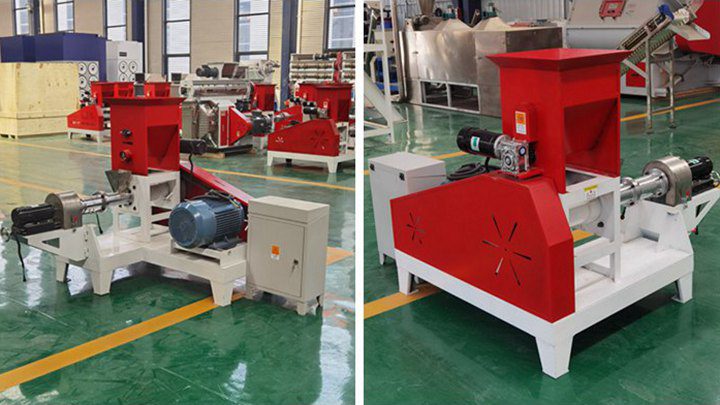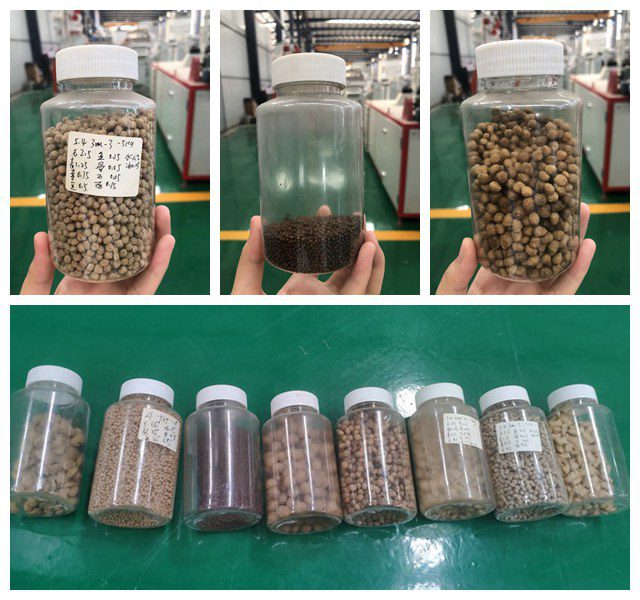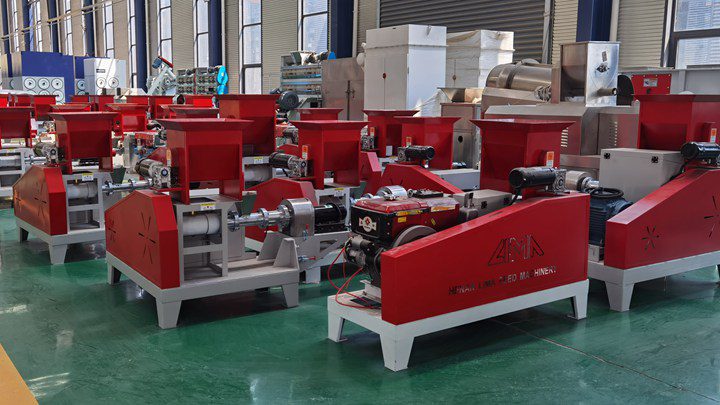With the development of the feed industry, the improvement of processing equipment and breeding technology, the aquatic feed by fish farmers have changed from ordinary single raw materials to powder, hard pellets and extruded feed.
At present, except for some species (such as soft-shelled turtle, eel, etc.) that use powder, other species basically use hard pellet feed and extruded feed pellet. The fish feed pellets are processed from crushed materials such as corn, soybean meal, straw, grass, and rice husks that directly press pellets.
What types of fish feed pellets are on the market today?
There are many kinds of aquatic feed, but in terms of shape, it can be divided into powder feed and pellet feed. Among them, pelleted feed is divided into hard pelleted feed, soft pelleted feed, micro-pelleted feed, and the hottest extruded pelleted feed on the market today.
Powdered feed
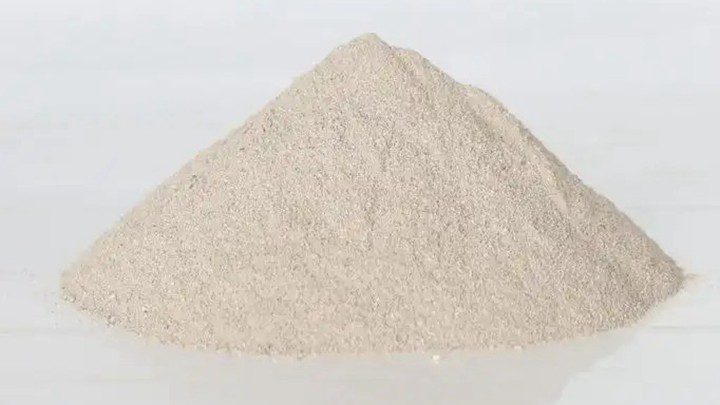
Powdered feed is made by crushing the raw materials to a certain extent and mixing them evenly. Due to the different water content in the feed, there are differences in powder, slurry, mash, and dough.
Powdered feed is suitable for raising fry, small fingerlings, and fish feeding on plankton. The powdered feed is processed, added with adhesives, starch, oil spray, and other processing technologies, then kneaded and pressed into dough or mash, which is suitable for eels, shrimps, crabs, turtles, and other precious carnivorous fish.
Feed Pellets
The feed raw materials are first crushed (or mixed first), then fully stirred and mixed, and water and additives are added.
- Hard pelleted feed: The water content of the molded feed is less than 13%, the particle density is greater than 1.3 g/m³, and the sinking property. Steam quenched and tempered above 80℃, rigid, diameter 1~8mm, length is 1~2 times of diameter. It is suitable for breeding salmon, trout, carp, crucian carp, grass carp, herring, bream, tilapia, and other species.
- Soft pelleted feed: The soft pellet feed has a water content of 20% to 30%, a particle density of 1 to 1.3 g/cm³, softness, a diameter of 1 to 8 mm, and a noodle or pelleted feed. No steam is added during the molding process, but 40% to 50% of water needs to be added, and it is dried and dehydrated after molding. Herbivorous, carnivorous, or carnivorous omnivorous fish like to eat this feed, such as grass carp, eel; carp, and bass. The disadvantage of soft pellet feed is that it has large water content, is prone to mildew and deteriorates, and is not easy to store and transport.
- Micro pellet feed: It is a general term for new feeds with a diameter of fewer than 500 microns and as small as 8 microns. They are often used as a substitute for plankton and are called artificial plankton. Feed newly hatched fry, shrimp, crab, and shellfish, also known as an open feed.
- Extruded pelleted feed: The water content of the extruded pellet feed is less than that of the hard pellet feed after molding, and the pellet density is about 0.6 g/cm³, which is a floating foamy pellet. It can float on the water surface for 12 to 24 hours without dissolving and dispersing, and the dissolution loss of nutrients is small, and it can directly observe the feeding situation of the fish, which is convenient to accurately control the feeding amount, so the feed utilization rate is high.
The most popular feed pellet: Extruded feed pellet
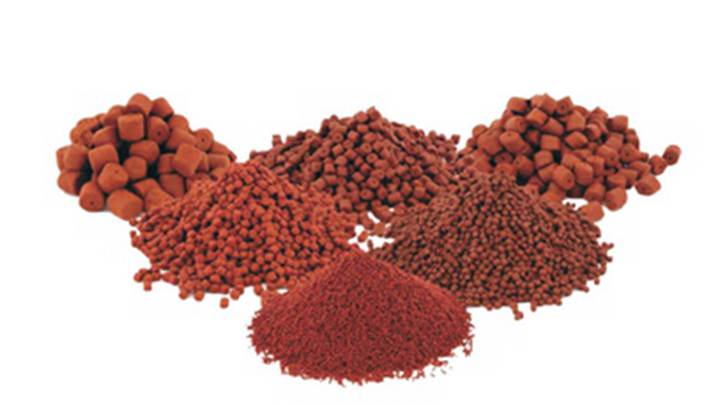
Extrusion processing is a new technology of feed processing. The extrusion of feed in the extrusion cavity is actually a high temperature and instantaneous process: the mixture is at high temperature (110-200 ℃), high pressure (25-100kg/cm2), and high shear In the environment of high strength and high moisture (10% -20% or even 30%), a bulky and porous feed is formed through continuous mixing, conditioning, heating and pressurization, maturation, extrusion die hole and sudden pressure reduction.
Compared with other types of feed, what are the advantages of extruded pellet feed?
Pellet extruded feed for fish has the advantages of comprehensive nutrition, strong stability, not easy to disintegrate in water, not easy to pollute the water body, easy to digest and absorb, and saving labor and labor for farmers. It is favored by the majority of aquaculture farmers. Compared with other types of feed, extruded pellet feed has the following advantages.
- In the granulation process, under the combined action of water, heat, and pressure, starch is gelatinized and cracked, and the structure of cellulose and fat is changed, which is conducive to the full digestion, absorption, and utilization of livestock and poultry, and improves the feed rate. digestibility. Steam high-temperature sterilization reduces the possibility of mold and insects in the feed and improves the palatability of the feed.
- The nutrition is comprehensive, and animals are not easy to be picky eaters, which reduces the separation of nutrients and ensures a daily supply of nutritionally balanced feed.
- The volume of pellets is reduced, which can shorten the feeding time and reduce the nutrient consumption of livestock and poultry due to feeding activities; it is easy to feed and save labor.
- It is small in size and not easy to disperse. In any given space, more products can be stored, and it is not easy to be affected by moisture, which is convenient for bulk storage and transportation.
- In the process of loading, unloading and handling, the various ingredients in the feed will not be graded to maintain the uniformity of trace elements in the feed to avoid animals being picky eaters.

